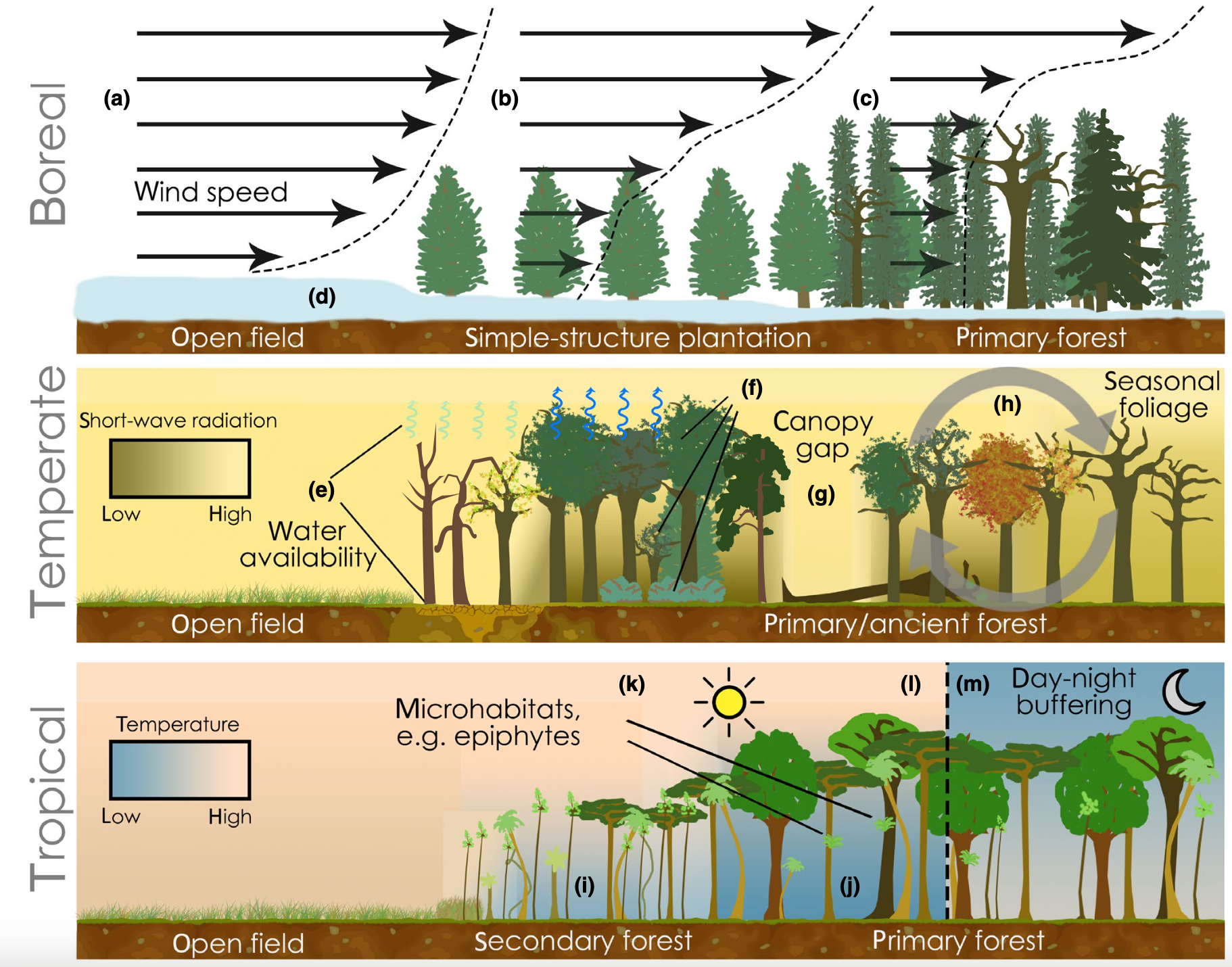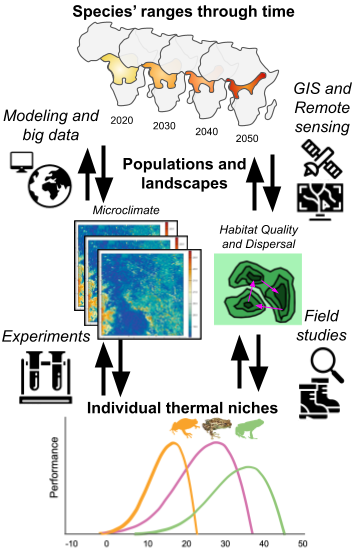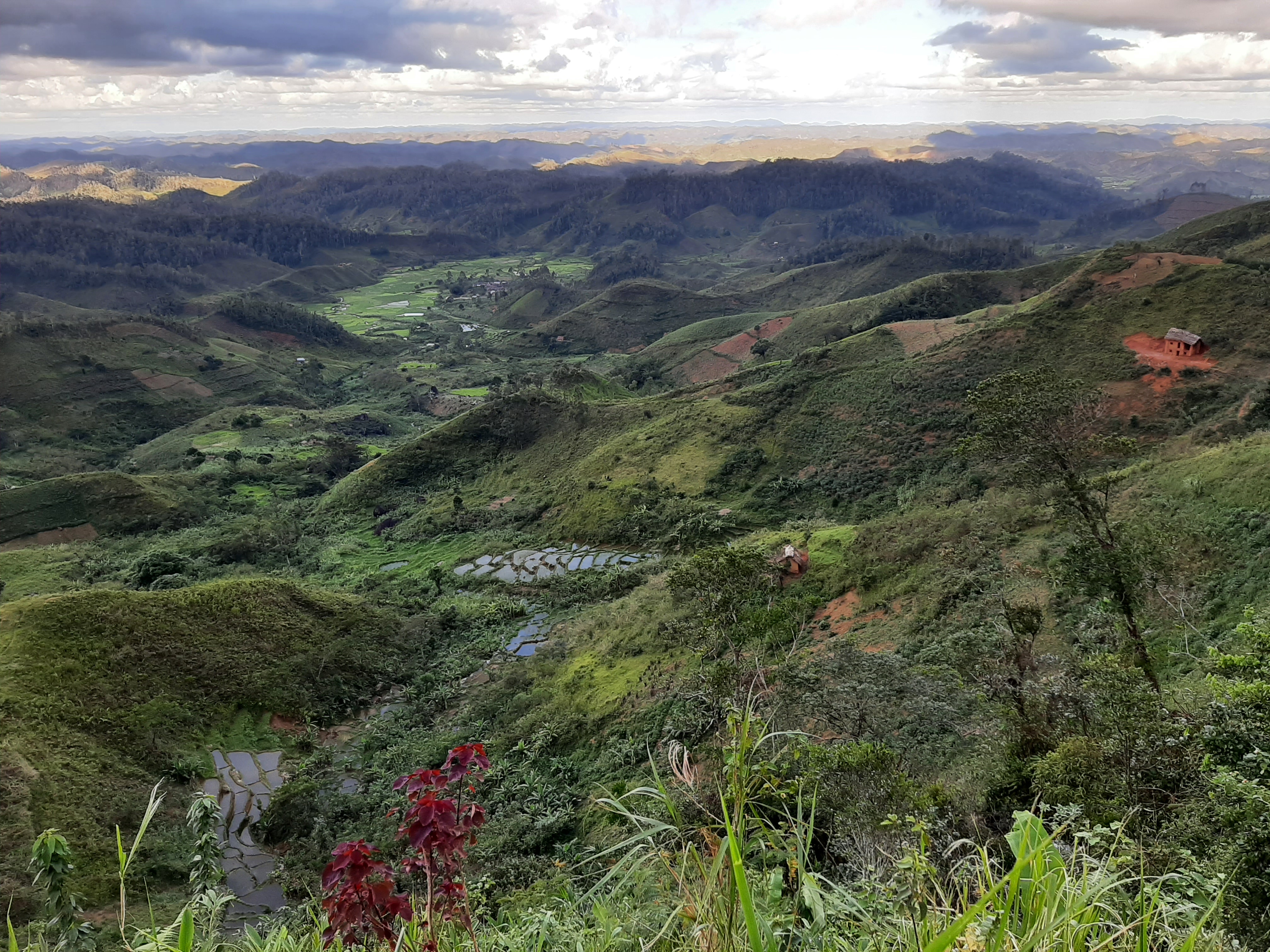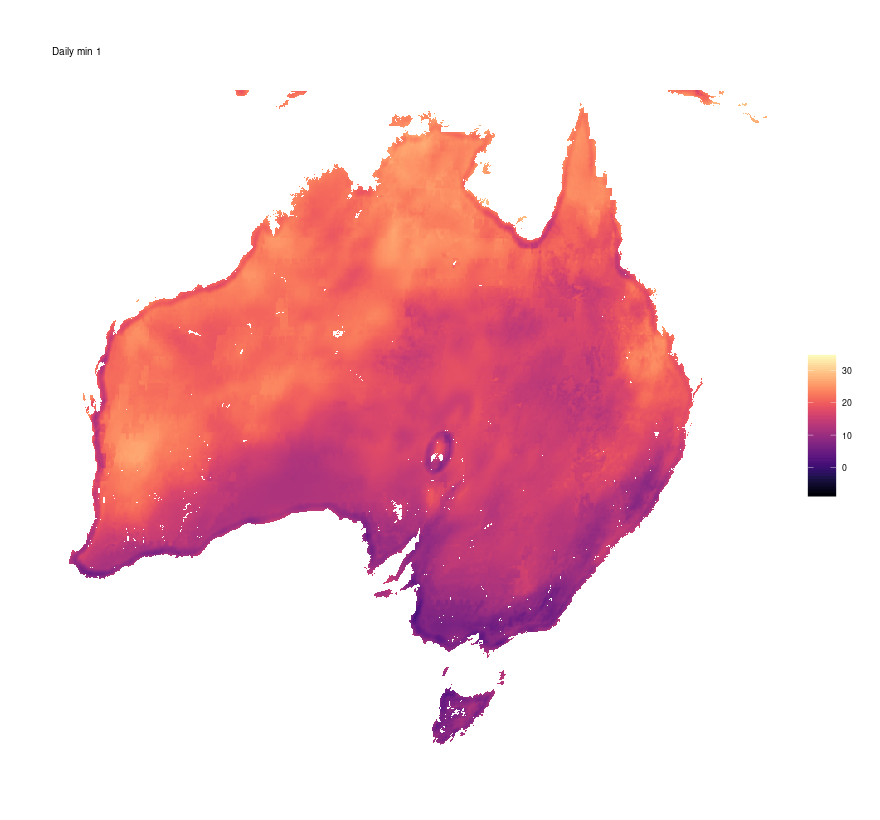Species on the Move in Space and Time
Climate change and habitat loss pose colossal challenges to biodiversity. Species can either move to track tolerable climates and habitats, alter the timing of life events (phenology), adapt to novel conditions, or perish. Critical for conservation and restoration, therefore, is to identify if, where, and why species will shift in response to global change. Yet our abilities to predict species’ shifting ranges and phenology remain lackluster. I attempt to improve our forecasts of species’ distributions, activity, and biological states, integrating big data on animal occurrences and remote sensing with mathematical models that represent biophysiology, demography, and dispersal.
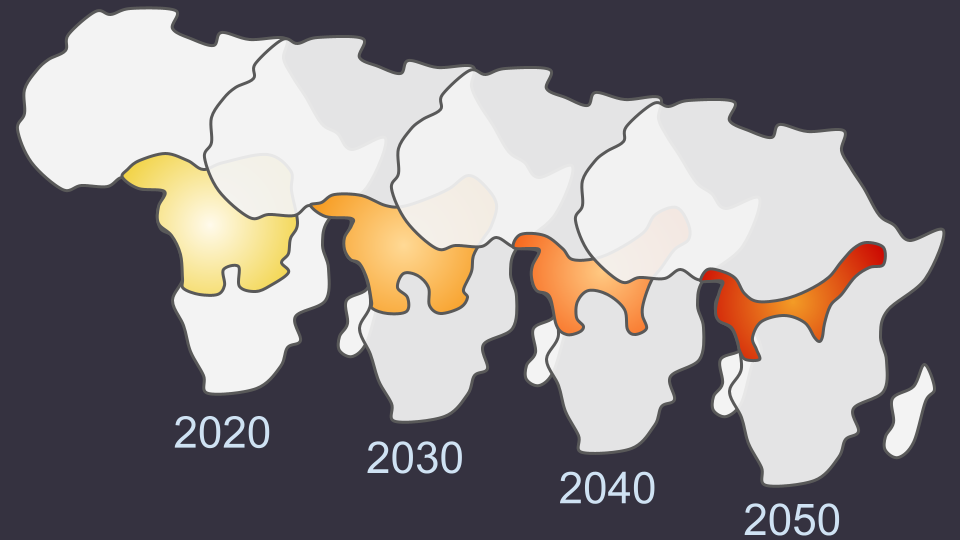
Exemplary publications:
Fredston et al. 2025 Trends in Ecology and Evolution
Soifer et al. 2025 Trends in Ecology and Evolution
Klinges et al. 2024 Global Ecology and Biogeography
Baecher, Klinges, Evans, Fletcher, Romagosa, Scheffers In Review
Ecophysiology of Amphibians and Reptiles
Animal physiology is a junction of an individual’s traits and behavior with its environment. I integrate experimentally-derived measurements of physiological responses to climate with tools and theory on landscape ecology. I focus upon the physiology of amphibians, which are functionally diverse, and also the most threatened vertebrate clade globally. Given that amphibians are ectothermic (i.e. no internal source of heat, or ‘cold-blooded’) they are highly sensitive to their local climatic conditions. This makes them an ideal group of organisms for thermal ecology and microclimate studies.

Exemplary publications:
Klinges, D.H. et al. 2024 Proceedings of the Royal Society of London B: Biological Sciences
Baecher, Klinges, Evans, Fletcher, Romagosa, Scheffers In Review
Vertitude: Animal Biogeography from Forest Floor to Canopy
While the biodiversity of forests is generally recognized, scientists focus our attention on the ground, neglecting the immense biological richness of understories and canopies (~80% of tropical forest species found aboveground). I explore how the underappreciated biogeographic axis of vertitude – from forest floor to canopy – shapes the thermal niches, morphology, and dispersal abilities of animals.
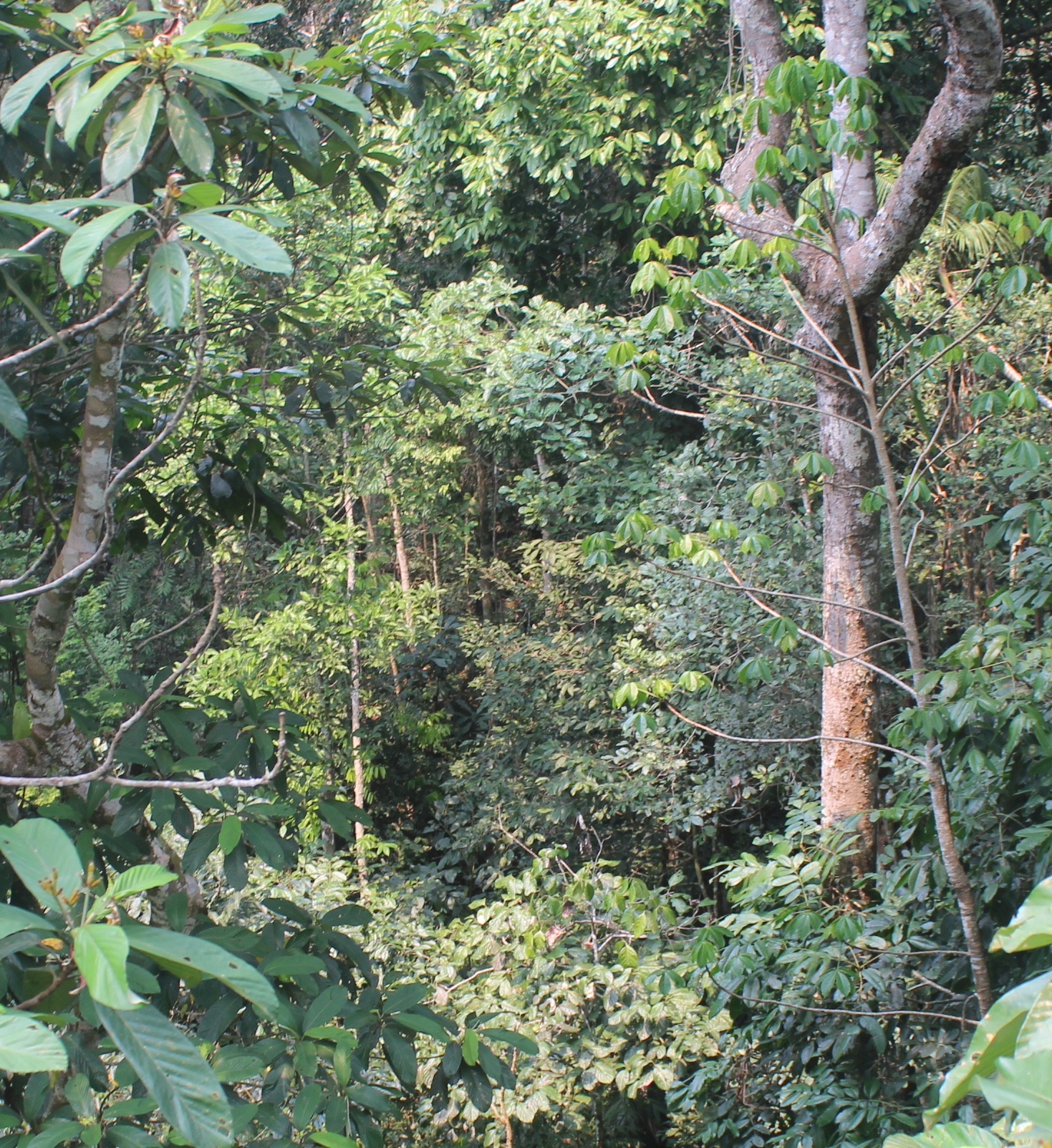
Exemplary publications:
Klinges and Scheffers 2021 The American Naturalist
Basham, Baecher, Klinges, Scheffers 2023 Biological Reviews
Klinges, D.H. et al. 2024 Proceedings of the Royal Society of London B: Biological Sciences
